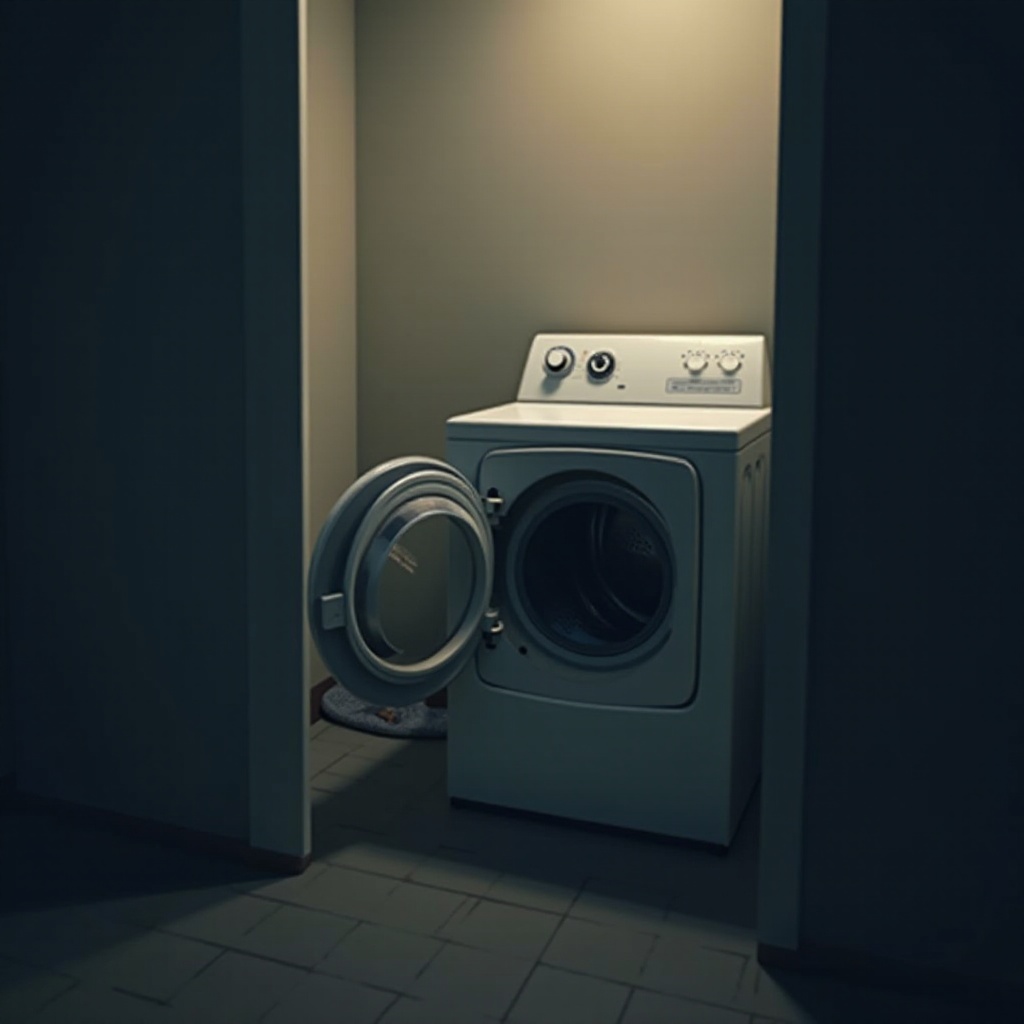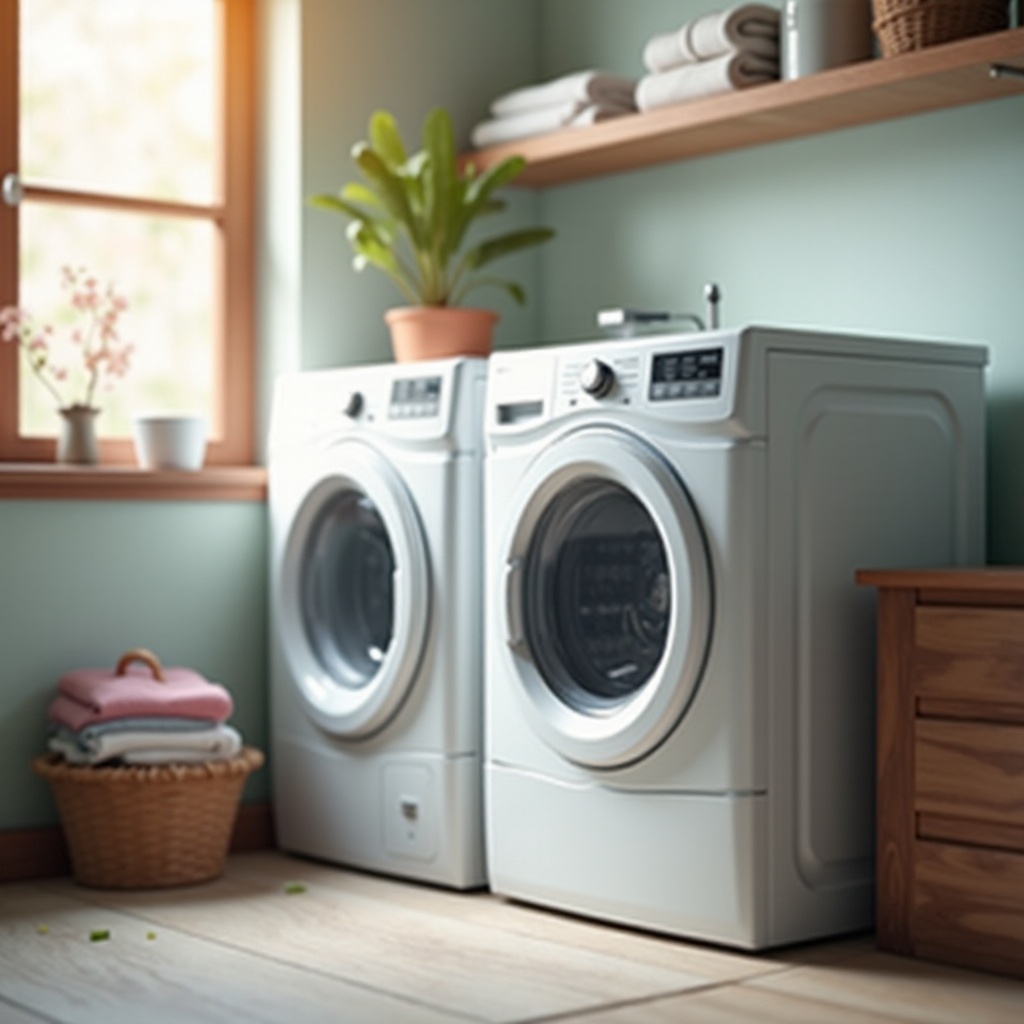Introduction
An electric dryer that refuses to heat can quickly disrupt your schedule. As a crucial household appliance, the dryer ensures clothes are dry, fresh, and ready to wear. When this appliance fails to function correctly—particularly by not producing heat—it turns a simple task into a source of frustration. Understanding the reasons behind why an electric dryer won't heat is vital for addressing the issue efficiently, ensuring your laundry routine remains uninterrupted.
Before diving into fixes, it's essential to recognize the dryer components and common malfunctions that may lead to heating failure. Through this guide, we provide insights into how electric dryers work, identify typical causes for heating issues, and offer actionable steps to troubleshoot and rectify these problems.

How Does an Electric Dryer Work?
Basic Components of an Electric Dryer
Electric dryers dry clothes by circulating heated air through a rotating drum. This process involves several key components:
- Heating Element: The source of heat.
- Thermostats: Devices that regulate temperature.
- Thermal Fuse: A safety feature that prevents overheating.
- Motor and Drum: Move clothes to ensure even drying.
Understanding these components helps pinpoint potential failures when your dryer isn't heating. The heating element is crucial as the primary source of heat, while the thermostats and thermal fuse ensure safety and temperature regulation.
Common Causes of an Electric Dryer Not Heating
Power Supply Issues
A frequent yet often overlooked cause of no heat is an inadequate power supply. Ensure your dryer is securely plugged in and that the circuit breaker hasn't tripped. Disruptions in the power supply prevent the dryer from heating adequately.
Faulty Thermostat
Thermostat malfunction is another typical issue that might inhibit the dryer from producing the set temperature. By regulating temperature, a faulty thermostat leads to either insufficient or absent heat.
Burned Out Heating Element
The heating element wears out over time or can become damaged due to overheating. This results in a functional drum without the essential heat needed to dry clothes.
Blown Thermal Fuse
A thermal fuse serves as a critical safety feature by halting power if overheating threatens. Blocked vents or lint accumulation can cause the fuse to blow, stopping the dryer from heating.
Efficient troubleshooting is essential to correctly identify and solve the root cause of these heating issues.
Step-by-Step Troubleshooting Guide
Diagnosing dryer problems accurately is the first step to restoring its heat function. Follow these steps:
- Checking the Power Source:
- Confirm the plug is secure in its outlet.
- Test the outlet by connecting another device.
Inspect the breaker box for any tripped circuits.
Inspecting the Heating Element:
- Use the dryer manual to locate the heating element.
- Look for physical damage or burn marks.
Test for continuity with a multimeter—lack of continuity suggests a fault.
Testing the Thermostat and Fuse with a Multimeter:
- Disconnect the dryer from power.
- Access the rear panel to find the thermostat and thermal fuse.
- Set the multimeter to resistance.
Detach wires before testing both components for continuity.
Verifying the Ventilation System:
- Check for obstructions in the vent pipe.
- Regularly clean the lint trap to ensure proper air flow.
Each successive step builds a clearer picture of where the fault may lie, helping hone in on the most effective repair.
How to Fix Common Electric Dryer Heating Problems
Replacing a Thermal Fuse
A blown thermal fuse should be promptly replaced:
- Disconnect the dryer from power.
- Remove the back panel and locate the fuse.
- Detach connecting wires and remove the damaged fuse.
- Install a new fuse, reattach wires, and reassemble.
Changing a Defective Heating Element
If you need to replace a faulty heating element:
- Ensure the dryer is unplugged and remove the back panel.
- Disconnect the element's wires.
- Unscrew and replace the old element with a new one.
- Reattach the panel and test functionality.
Timely intervention prevents minor issues from escalating into significant problems, restoring the dryer's function.
Preventive Maintenance Tips
Regular maintenance reduces repairs and extends the lifespan of your dryer. Here's how:
- Regular Cleaning Routines: Clear lint from traps after each use. Wipe the drum interior with a damp cloth periodically.
- Proper Vent Maintenance: Keep vent hoses straight and clean them biannually to prevent clogs.
Routine care boosts dryer efficiency while minimizing overheating or breakdown risks.

When to Seek Professional Help
Not all dryer issues are suitable for DIY solutions, and professional assistance might be necessary. Engage an expert if:
- Heating issues persist despite troubleshooting efforts.
- You lack the tools or know-how for safe electrical repairs.
- You encounter complex problems like electronic control failures.
Recognizing the need for professional support ensures efficient problem-solving without added stress or appliance damage.

Conclusion
Understanding why your electric dryer won't heat is pivotal for swift and effective resolution. With guided troubleshooting and regular maintenance, you can avert future problems, ensuring your dryer runs seamlessly. Addressing basic power concerns or replacing essential components, a well-informed approach can significantly enhance your appliance's longevity and effectiveness.
Frequently Asked Questions
How often should I clean the dryer vent?
Clean your dryer vent every six months or more frequently based on use to ensure proper airflow and prevent lint buildup.
Is it safe to replace dryer parts myself?
Yes, with the right tools and knowledge. Always disconnect the dryer before repairs to ensure safety.
What should I do if my dryer still won't heat after troubleshooting?
If issues persist, consider contacting a professional technician for a thorough inspection.
